Content marketing is an increasingly busy space. We have more channels, tools, content types, and competition than ever before.
So, is it better for brands to create content from scratch or is gathering and sharing content produced by others a better approach?
hbspt.forms.create({
region: “na1”,
portalId: “8477337”,
formId: “7b5bb39f-cd97-4a83-9934-a41acb1ccb5e”
});
What’s the Difference Between Content Creation and Content Curation?
Before we get into it, let’s make sure we are all on the same page.
Content creation is the process of creating your own content from scratch and marketing it to your followers or subscribers. That could be a blog, social media post or thread, e-ook, video, image, Reel, Story, TikTok, and so on.
Content curation is the process of gathering existing information like blog posts, social media posts, and videos written and shared by other people or brands and sharing it with your followers.
According to research, the sweet spot is a 60/40 ratio of content curation vs content creation. This suggests that the lion’s share of time should be dedicated to finding, organizing, annotating, and sharing content of the highest quality.
Let’s take a look at the pros and cons of content creation and content curation and how leading brands ace both those content strategies.
The Pros of Content Creation
There are many benefits to creating your very own content from scratch. Here’s a list of the top benefits for creating content.
New content generates leads and traffic
61% of marketers consider generating traffic and leads to be their biggest challenge. But unique content can help in many ways.
For example, businesses that blog regularly tend to attract 55% more traffic than those that don’t. In regards to leads, 90% of consumers are willing to share data with brands if it makes the shopping experience cheaper and easier.
Of course, blog content needs to be original for SEO purposes. Copied or curated content can leave you on the search engine naughty list.
Grab these content ideas to start crafting fresh content today.
It’s approved
If you work in a heavily governed industry such as the finance sector, writing and approving content in-house could be safer.
At Contentworks Agency we produce content and social media for the finance space and need to be super careful on compliance.
All content, even social media posts, are approved by an in-house legal and compliance team. Maintaining control over what you put out is a must and sharing non-compliant content can land a brand in hot water.
If we do choose to share content, we triple-check all sources and that the post is still compliant.
Freshly created content is on brand
Consistent presentation of a brand has been shown to increase revenue by 33%. It’s easier to be consistent when you have a content guide that ensures your tone of voice is the same across all marketing channels and materials.
(Constantly sharing someone else’s content is inconsistent and could encourage consumers to divert from your brand and head elsewhere.)
As an example of brand consistency, let’s look at Airbnb’s terminology. The word “Superhost” recognizes the best in hospitality and the most experienced hosts. Airbnb uses this term consistently across their platforms so that when you see Superhost-related content on social channels such as Instagram it’s easy to comprehend.
You also associate the word with Airbnb.
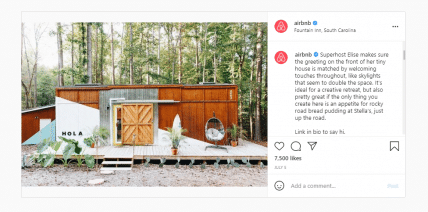
Content creation allows you to get creative
No one knows your brand as well as you and by creating content from scratch, you can show the world exactly what you want to be.
Check out Charmin, for instance. Quirky, funny, and uninhabited, they run wild with all kinds of innovative and unique content that simply couldn’t come from anyone else. It’s directly linked to their product (toilet paper) and their target audience who tune in for some humor.
This boosts engagement and helps to develop a strong brand identity.
When it’s your own creative content, you won’t even have to worry about copyright issues and can use your own colors, logo, slogan, and hashtags for maximum campaign exposure.
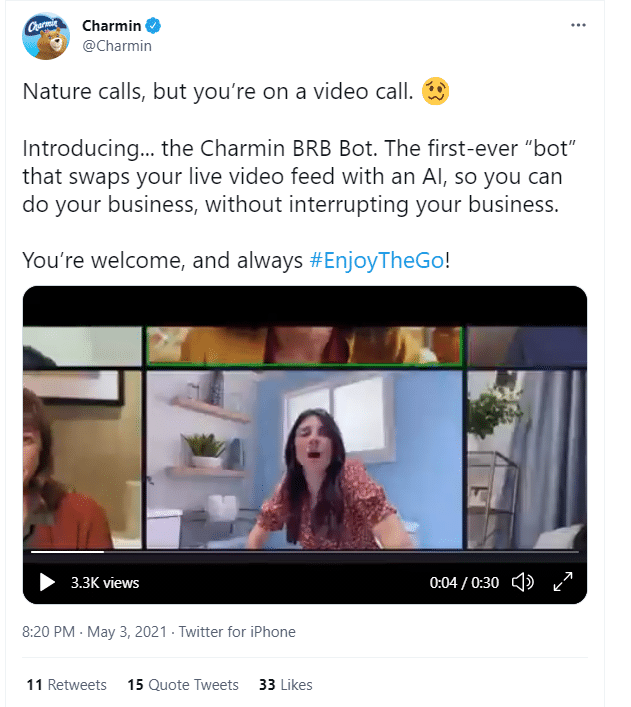
Content Creation tip: In regards to content creation, you should aim to utilize on-brand videos.
According to the latest stats, 87% of video marketers say that video has increased traffic to their website, and 80% claim that video has directly increased sales. Creating short, branded videos for social media is a great way to promote new products in a fun and visually engaging way.
Check out this example from Krispy Kreme.
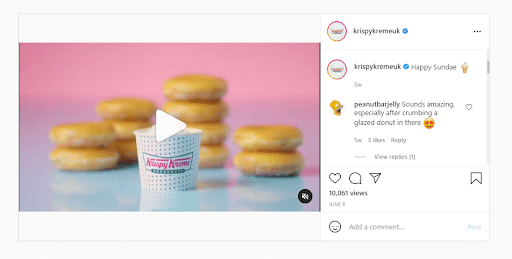
It promotes thought leadership
Want to be seen as an expert in your sector? Then it’s necessary to build credibility first-hand rather than always leaning on other sources. This means authoring high-quality articles for platforms like LinkedIn, answering questions, joining in discussions on social outlets like Shortcut (formerly Clubhouse), having a strong social presence, and adding value to your sector.
Founder and CEO of Bumble, Whitney Wolfe Herd is a thought leader in the dating app world. She regularly shares her opinions on relevant industry topics and has recently strived to update thelegal system regarding lewd images.
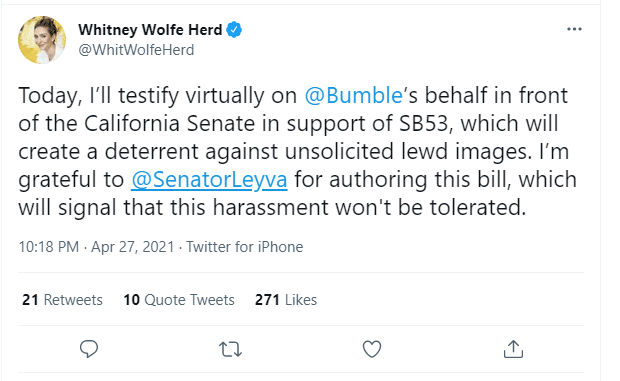
As 70% of consumers feel more connected to brands with CEOs that are active on social media, authentic content creation will help to build B2C loyalty.
Additionally, according to research conducted by The Grist, 66% of executives use thought leadership to stay ahead of trends. Some 60% also report that thought leadership helps them make better, more informed decisions.
Thought leadership requires a dedicated, thought-out strategy and it is time-consuming.
But we are coming to that right now …
The Cons of Content Creation
Content creation is great for brand identity as it gives you ultimate control over what you publish. It sets you apart as a trendsetter and thought leader too. But there are a few cons to watch out for.
It’s time-consuming
Coming up with new ideas and fresh content can rinse your in-house budget (and creative energy!) A single blog post can take up to four hours to write, especially if you want it loaded with the latest facts. Google’s algorithm prefers more content, which means blog posts with over 1,000 words do better on average.
How to blog better starting today
If you’re looking to gain organic search traffic and snippets, you will need to write well-structured articles with solid keywords, social media sharing metadata, and on-brand contextual images or videos.
You also need to factor in the time taken to create matching graphics and to schedule social media shares.
It’s not cheap
Don’t expect to pay pennies for decent content, whether it’s written in-house or outsourced.
Content will need to feature heavily in your budget. The price will rise for industries such as finance and medicine that are particularly niche. You will also need to factor in costs for managing content and social media uploads, matching graphics, and any promotions you do later.
Content creation requires a plan
According to the recent B2C Content Marketing Benchmarks, Budgets and Trends report, 73% of organizations have a content marketing strategy. Of those, just 42% have a documented strategy. While this is up 33% from the previous year, it still leaves a whole lot of room for improvement.
Do you have a content marketing strategy in place?
If you’re going to create interesting and relevant content, it’s important to have a plan. This could include scheduling content for significant industry events or creating social media content for specific days of the year.
Recent Pride Month content from companies such as Skittles certainly required detailed preparation and carefully thought-out release dates.
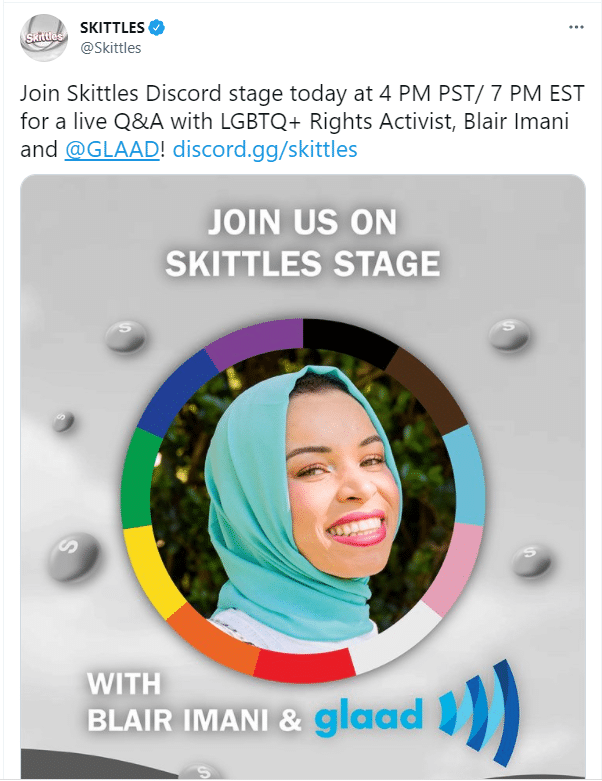
I recently talked about creating a social media schedule. You can read that article here.
The Pros of Content Curation
So that’s content creation covered. But what are the benefits of content curation?
Let’s look.
Content curation saves time
Sharing other people’s content that’s relevant to your brand and useful to users, can save time. After all, the ideal blog post length for SEO should be 2,100–2,400 words and that takes hours to create.
Additionally, you don’t need to plan out all the graphics, videos, or GIFs to go with it. You can share it and add your own commentary if it’s relevant.
Remember that curating a great blog does not mean copying it directly to your site!
It’s less egotistical
You wouldn’t hang out with someone that just spoke about themselves the whole time, would you? The same applies to brands. It’s important not to come across as braggy or egotistical.
So, it’s a good idea to share other viewpoints and opinions from time to time. Sharing partner content or content featuring brand mentions offers validation and a third-party perspective.
Additionally, you could add your support to another brand’s charity or community initiative. You lose nothing by being a good community member.
Oreo nailed this during Pride Month 2021 by teaming up with PFLAG National.
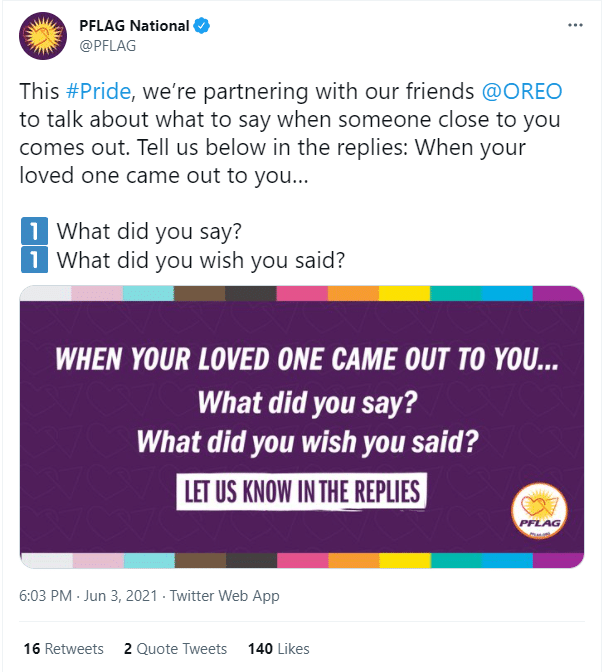
Retweeting posts you’re tagged in or linking to content that mentions your products or key team members is also a great way to boost brand awareness and reach, increase FOMO and improve the desirability of your brand.
Take a look at how fintech company Revolut retweets relevant information from event organizers Dublin Tech Summit.
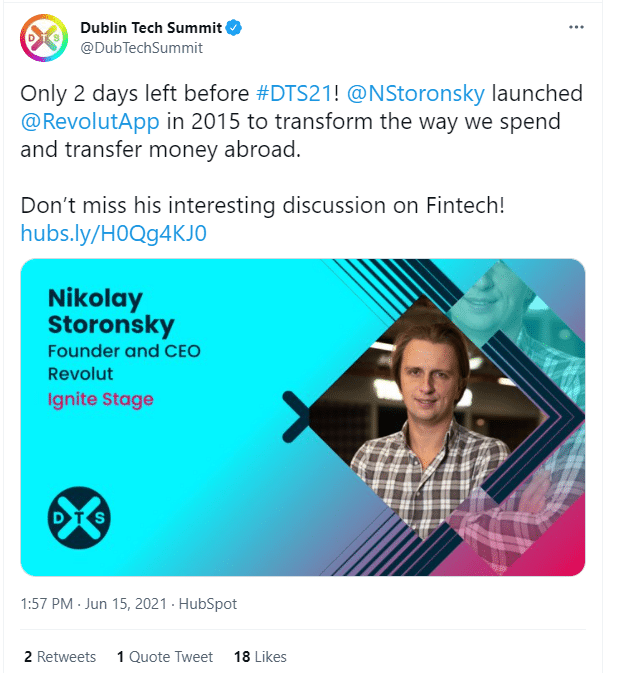
Content Curation Tip: Use your Agorapulse dashboard to monitor for brand mentions. This is especially important if you’re hosting an event, campaign, or initiative. Seeing mentions in real-time allows you to interact and be a part of the conversation.
You can draw on the strength of micro-influencers
88% of people say it’s important for influencers to be authentic and genuinely care about their interests. And that’s where micro-influencers come into play.
Those with smaller follower numbers tend to engage better with followers and are pickier about what they promote. Influencers have the power to create a wide range of sharable content, from product tutorials and Q&A sessions to interviews and debates.
Brands such as Bandelettes regularly share micro-influencer content to their Instagram account. There are many things to love about this particular example.
First, the influencers chosen are a perfect brand fit. Curvy, bold, and confident in their clothes. This is important as it helps each campaign to be authentic.
Also, by targeting people that can promote your brand naturally, you’re likely to extend your outreach by tapping into fans with similar interests. For example, Ashley Dean featured, has 22.7K followers all of whom might enjoy purchasing from Bandelettes.
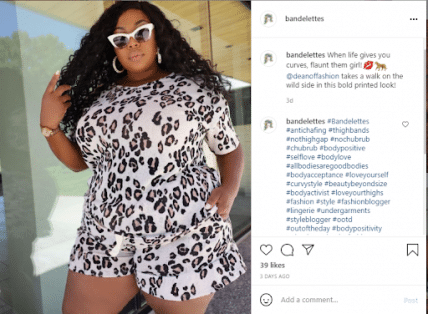
You can build community
Business is hard. But the more you share content and engage with other content contributors and brands, the more you’ll become known in your space. Jamie’s Ministry of Food cooking program is a great example of this.
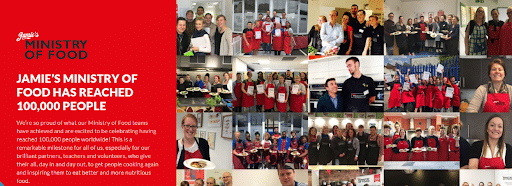
It encourages and teaches people of all ages and backgrounds to cook from scratch and stories are regularly shared across social media.
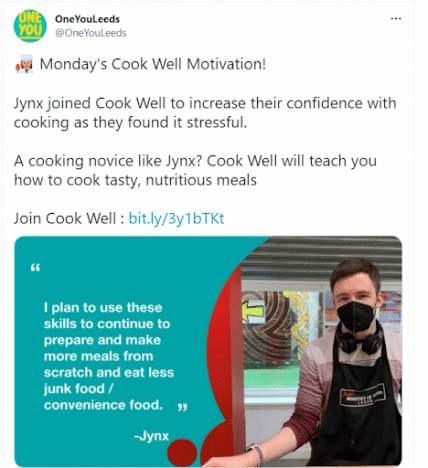
When building an online community, there are several simple things you can do.
First, encourage user-generated content (UGC) as this is a great way to populate your feed organically. If you share or retweet content, be sure to tag any necessary people as this will create a sense of belonging and pride while extending your outreach.
Share success stories, focus on the positive, and link to local news or events that’ll interest your followers.
hbspt.forms.create({
region: “na1”,
portalId: “8477337”,
formId: “7b5bb39f-cd97-4a83-9934-a41acb1ccb5e”
});
The Cons of Content Curation
Content curation is time-saving and a great way to improve brand outreach. But there are a few things to be aware of.
Sharing other people’s content too often can take the edge off your own content
So, it’s important to prioritize things such as product launches, offers, and discounts with unique and on-brand content rather than send people elsewhere.
It can result in a lack of trust
If you curate content, be sure to check your sources. After all, you don’t want to share inaccurate information, especially if you’re trying to become a go-to source of knowledge.
Make sure all sources you use are known for posting credible content and ensure they’re not overly biased about a particular topic
Beware of liability, too. Depending on your sector you may still be held accountable for a retweet.
For example, if your financial brand retweets another account that tells people Bitcoin will go up in value and they invest based on what they deem to be advice from your brand, this could land you in trouble.
Copyright issues can cause a headache
While you don’t have to worry about sharing a social media post that includes someone else’s content, you shouldn’t create your own post that directly copies the imagery or information from another brand. That’s unless you have permission or credit the author.
Failing to do so would be considered plagiarism.
Tools and Tactics for Content Curation
There are many ways to make content curation a breeze and to get your hands on some brilliant and highly sharable content.
Here are some tools and techniques to bear in mind.
1. Host a roundup
The premise of a roundup is simple. Ask a selection of experts to comment on a particular question or idea and then feature them in a roundup. For example, you could ask something like “What’s the best SEO advice for newbies?” And wait for the replies to roll in.
How to Become a Social Media Manager: 18 Experts Share Advice
Take a look at this in action below.
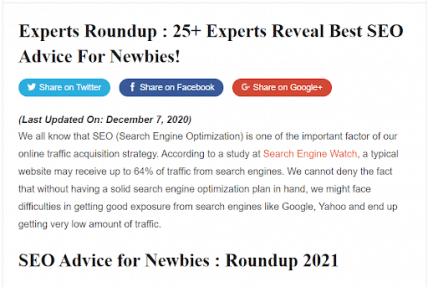
2. Use Agorapulse for all your social media management needs
Using Agorapulse’s easy content management calendar, you can schedule your evergreen content (or someone else’s) throughout the year. Within the panel you can choose to repeat content that has performed well, even if it isn’t yours.
If a customer of yours has published a great product review for example, you can choose to repeat it at different times. You can also monitor for brand mentions, follow hashtags and make a list of your top brand ambassadors for future content curation.
Should you post now, schedule, or queue content?
3. Try Paper.Li
This is a social media marketing tool that curates your popular tweets and formulates them in a super handy online newspaper. The free version is basic, so if you’re a social media manager for a brand it’s worth paying the $12.99 a month for the pro edition. This allows various options including customization, branding, automation, and unique CTAs.
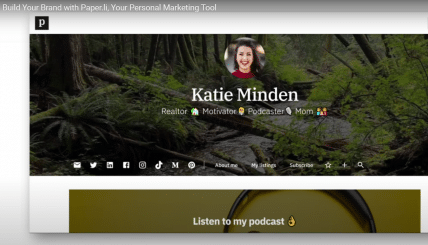
4. Check out Flipboard
Flipboard allows you to curate content from the sources you like and trust. Select your interests and your feed will be curated with articles and recommended stories about those topics. This gives you excellent fodder for content sharing and ideas for your own content creation team. You can also follow other people who have similar interests as you on social media allowing you to share their content.
5. Twitter Lists
Twitter is a massive fast-moving mess if you don’t get organized, and creating Lists is the best way to do that. Curated groups of Twitter users that fit into certain categories, make it easy for you to find content to share, or discussions to take part in.
You can read more about creating and managing Twitter Lists here:
In Conclusion
There’s no hard and fast rule on the percentage of content a brand should create, versus curate. It will depend a lot on your brand, its target audience, its products, and the capabilities and budget of its marketing team.
However, if you’re only pushing out your own content, it could be time to expand your horizons and start curating. Likewise, if you’re only curating, you’ll want to add content creation to your marketing mix.
Get started on sharing your created and curated content that rocks! Check out our free trial of Agorapulse to help you schedule, track, and measure all your created and curated content for social media.
Read more: agorapulse.com










